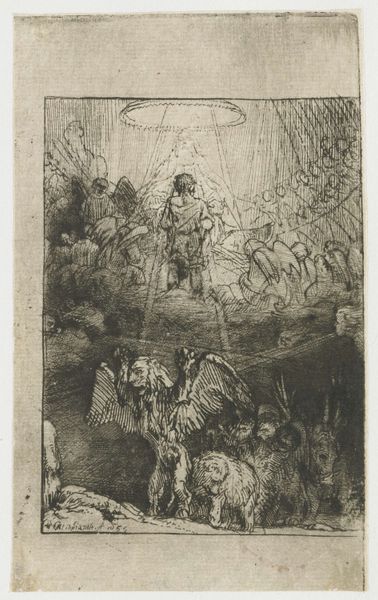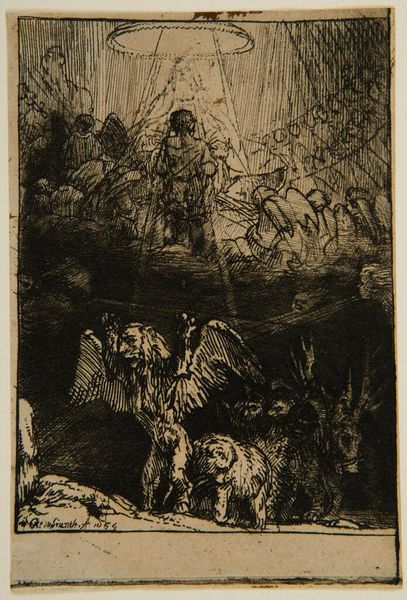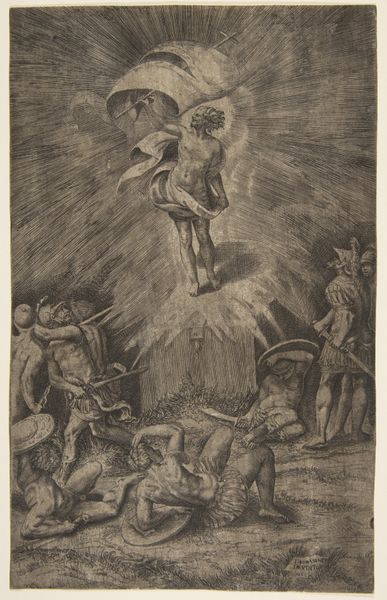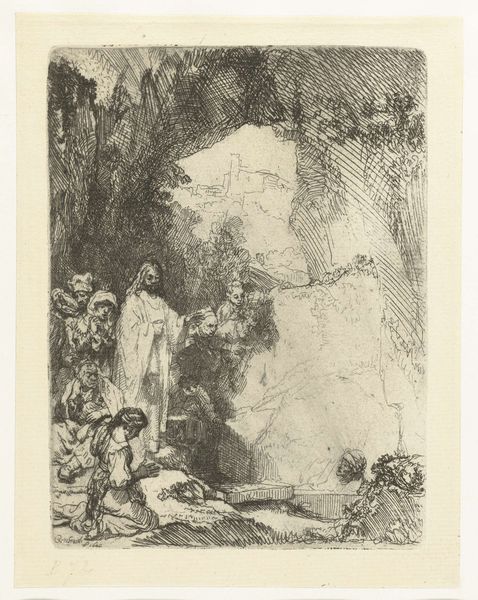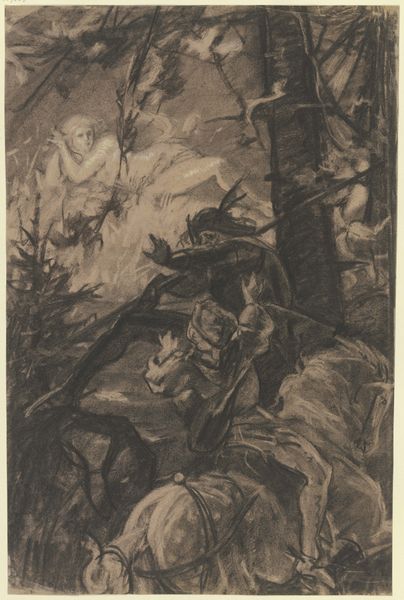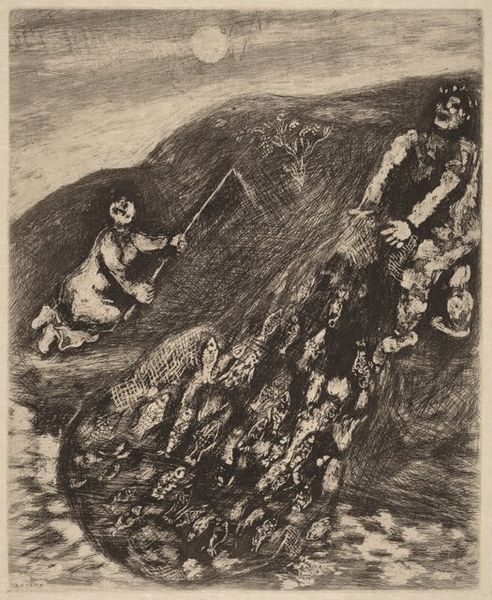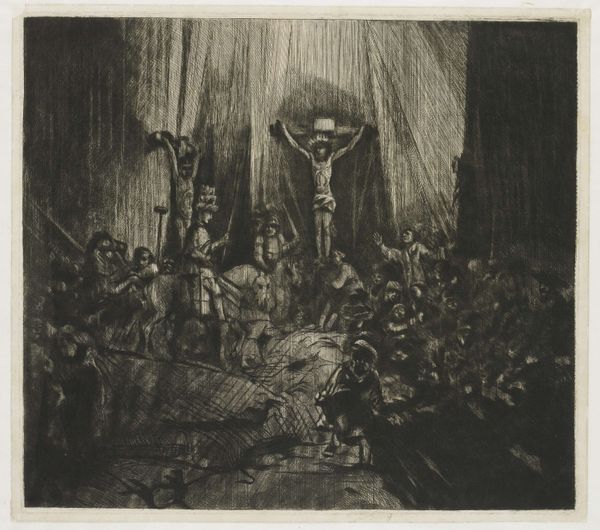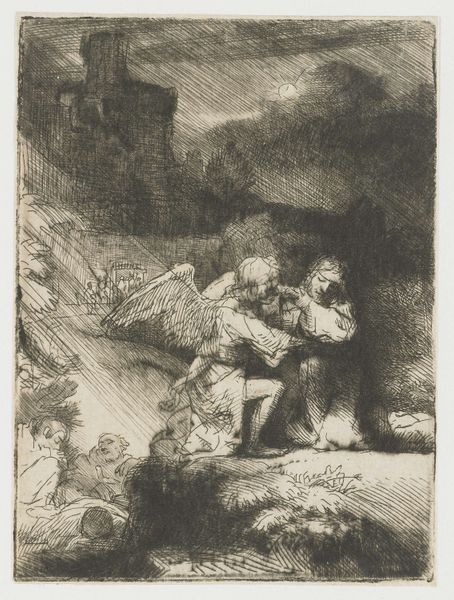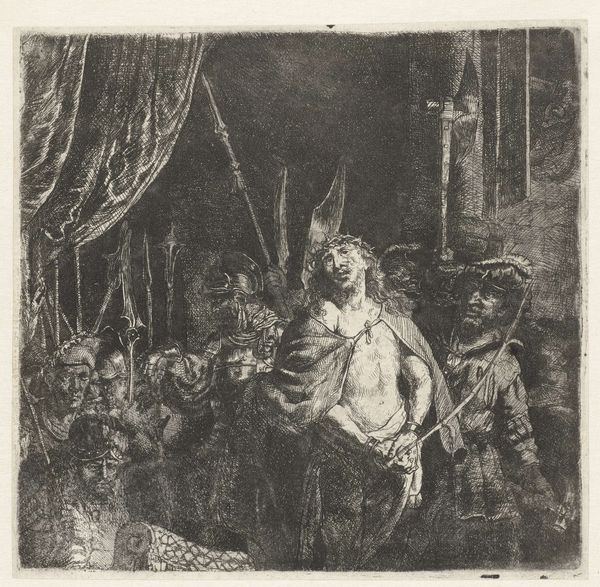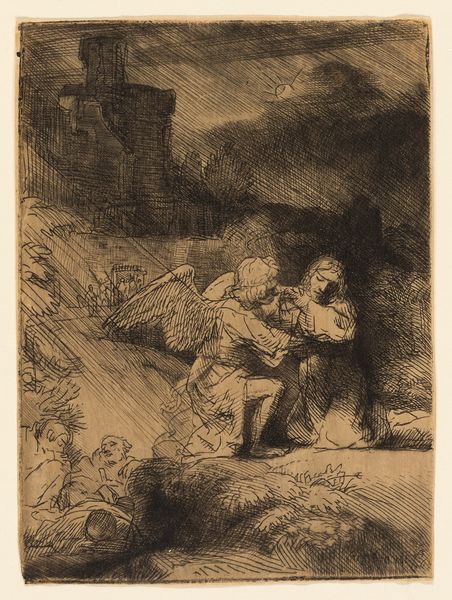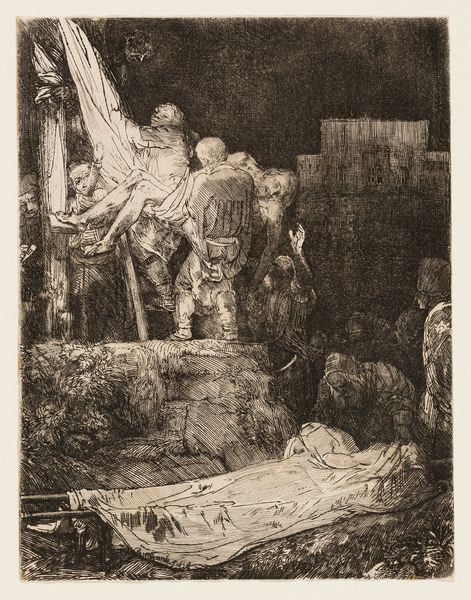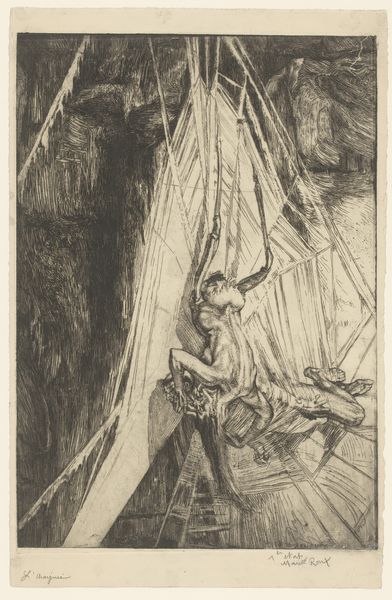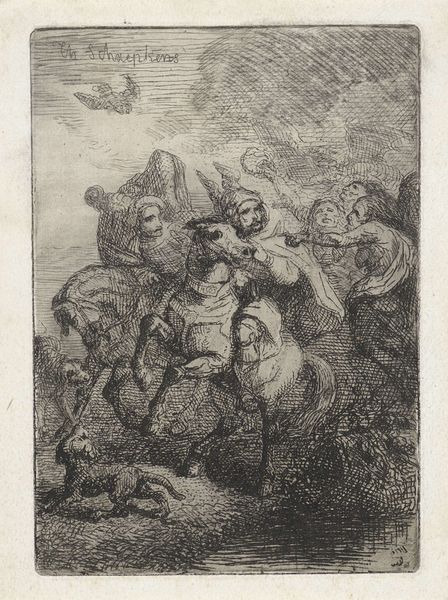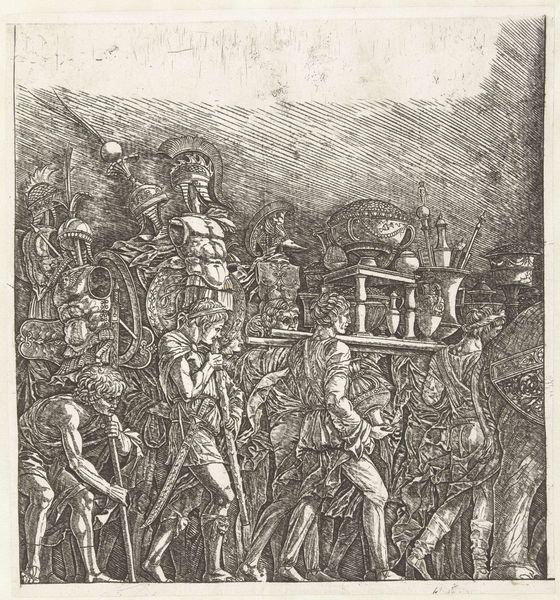
print, etching, ink, pen
#
ink drawing
#
narrative-art
#
baroque
# print
#
pen sketch
#
etching
#
pencil sketch
#
figuration
#
ink
#
line
#
pen
#
history-painting
Dimensions: height 107 mm, width 76 mm
Copyright: Rijks Museum: Open Domain
Curator: Immediately, I'm struck by the energy—a swirling vortex of dark lines and dramatic light. There's an undeniable sense of unease. Editor: Indeed. This etching by Rembrandt van Rijn, completed around 1655, is titled "Daniel's Vision of the Four Beasts." It visualizes a scene from the Book of Daniel. Curator: "Vision" feels like an apt word. Look how Rembrandt uses the etching needle to create this ethereal, almost dreamlike quality. Those radiating lines, emanating from above, create such a powerful focal point. What is its deeper significance? Editor: Rembrandt uses potent imagery here. The beasts, these hybrid creatures, symbolize successive earthly kingdoms known for their tyranny and violence. Notice the angel at the left. Its raised arms aren't simply a gesture; they signify divine intervention, promising an end to earthly power. Curator: That angel’s face—a mask of solemn determination. And the placement near those beasts is hardly coincidental. Rembrandt’s use of light and shadow emphasizes the struggle between good and evil, chaos and order. I keep circling back to that intense chiaroscuro effect. How it elevates this narrative to something deeply emotional, even disturbing. Editor: Precisely! That technique pulls forward the stark reality that these mythical animals refer to events of history, laden with very human motivations and cruel outcomes. Moreover, it may invite the audience to assess contemporary forms of statecraft. Curator: There’s an inherent universality here. While rooted in a specific biblical narrative, the underlying themes of oppression, liberation, and the ultimate triumph of good are eternally relevant, don’t you think? Editor: I do. Thinking about Rembrandt’s artistic language, his composition, we observe an ability to take something distant in both time and place and make it imminently relevant. Curator: It's an enduring testament to the power of art, isn't it? Editor: Indeed. Its careful design reveals layers of interpretation, prompting us to consider the cyclical nature of power and resistance.
Comments
No comments
Be the first to comment and join the conversation on the ultimate creative platform.
